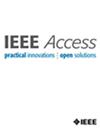OTFS-Based Physical Layer Authentication for UAV-Assisted Data Collection in Wireless Sensor Network
IF 3.4
3区 计算机科学
Q2 COMPUTER SCIENCE, INFORMATION SYSTEMS
引用次数: 0
Abstract
Autonomous aerial vehicle (commonly known as UAV) wireless communications have become widespread in military and civilian applications, partly due to its inherent line-of-sight (LoS) air-to-ground channels, easy deployment and high mobility. They have been adopted for data collection in the Internet of Things (IoT). For a communication scenario with a single UAV data collector in a delay-sensitive application, authentication is an important procedure which prevents illegal or malicious sensors from sending fake data to the data collector. However, traditional authentication schemes depend on cryptography, which is energy and time consuming. Thus, they are unsuitable for latency-intolerable applications and energy-constrained UAVs. This work aims to design a keyless, energy-efficient authentication scheme suitable for high-speed mobility scenarios. To this end, we propose an Orthogonal Time Frequency Space (OTFS)-based lightweight physical layer authentication (PLA) scheme. We begin by deriving the relationship between the location of the transmitter and normalized OTFS Doppler shift to develop the hypothesis test. Henceforth, we derive the probability density function (PDF) expressions of false alarm and missed detection. The PDF of the false alarm and missed detection are the basis for setting an optimal detection threshold for the authentication hypothesis test. Numerical results demonstrate that the proposed scheme holds well to fading effects for a robust and secure authentication scheme, and outperforms Orthogonal Frequency Division Multiplexing (OFDM) for PLA. The advantages of OTFS over OFDM for PLA are well elaborated.基于otfs的无线传感器网络无人机辅助数据采集物理层认证
自主飞行器(通常称为UAV)无线通信在军事和民用应用中已经变得广泛,部分原因是其固有的视距(LoS)空对地通道,易于部署和高机动性。它们已被用于物联网(IoT)的数据收集。对于延迟敏感应用中单无人机数据采集器的通信场景,身份验证是防止非法或恶意传感器向数据采集器发送虚假数据的重要步骤。然而,传统的身份验证方案依赖于加密技术,这是一个费时费力的问题。因此,它们不适合延迟无法忍受的应用和能量受限的无人机。本工作旨在设计一种适合高速移动场景的无密钥节能认证方案。为此,我们提出了一种基于正交时频空间(OTFS)的轻量级物理层认证(PLA)方案。我们首先推导发射机位置与归一化OTFS多普勒频移之间的关系,以发展假设检验。因此,我们推导了虚警和漏检的概率密度函数表达式。虚警和漏检的PDF是为认证假设检验设置最优检测阈值的基础。数值结果表明,该方案具有良好的抗衰落性能,是一种鲁棒安全的认证方案,并优于正交频分复用(OFDM)。详细阐述了OTFS相对于OFDM在PLA中的优势。
本文章由计算机程序翻译,如有差异,请以英文原文为准。
求助全文
约1分钟内获得全文
求助全文
来源期刊

IEEE Access
COMPUTER SCIENCE, INFORMATION SYSTEMSENGIN-ENGINEERING, ELECTRICAL & ELECTRONIC
CiteScore
9.80
自引率
7.70%
发文量
6673
审稿时长
6 weeks
期刊介绍:
IEEE Access® is a multidisciplinary, open access (OA), applications-oriented, all-electronic archival journal that continuously presents the results of original research or development across all of IEEE''s fields of interest.
IEEE Access will publish articles that are of high interest to readers, original, technically correct, and clearly presented. Supported by author publication charges (APC), its hallmarks are a rapid peer review and publication process with open access to all readers. Unlike IEEE''s traditional Transactions or Journals, reviews are "binary", in that reviewers will either Accept or Reject an article in the form it is submitted in order to achieve rapid turnaround. Especially encouraged are submissions on:
Multidisciplinary topics, or applications-oriented articles and negative results that do not fit within the scope of IEEE''s traditional journals.
Practical articles discussing new experiments or measurement techniques, interesting solutions to engineering.
Development of new or improved fabrication or manufacturing techniques.
Reviews or survey articles of new or evolving fields oriented to assist others in understanding the new area.
 求助内容:
求助内容: 应助结果提醒方式:
应助结果提醒方式:


